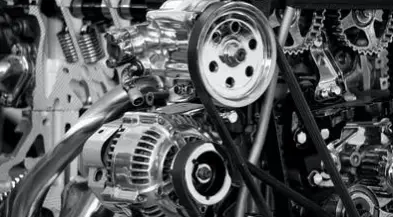Advantages And Disadvantages Of Vibration

Vibration, the oscillation of an object or a surface, can have both advantages and disadvantages depending on the context in which it occurs.
Here are some of the key advantages and disadvantages of Vibration:
Advantages:
-
Vibration Analysis for Structural Health Monitoring:
- Early Detection of Structural Issues: Vibration analysis can be used to detect potential structural problems in buildings, bridges, and other infrastructure, allowing for preventive maintenance and early intervention.
-
Industrial Applications:
- Material Sorting and Processing: Vibrations are used in industrial processes for sorting and processing materials based on size and density.
- Compaction and Consolidation: Vibrations are employed in construction and manufacturing to compact and consolidate materials.
-
Medical Applications:
- Ultrasonic Imaging: In medical imaging, vibrations (ultrasound) are used for diagnostic purposes, such as in ultrasound scans for imaging internal organs.
-
Mechanical Systems:
- Vibration Testing: Vibration testing is used to evaluate the performance and durability of mechanical systems and components, ensuring they can withstand real-world conditions.
-
Musical Instruments:
- Sound Production in Musical Instruments: Vibration is fundamental to the production of sound in musical instruments, such as strings vibrating in a guitar or piano.
-
Sensors and Measurement Devices:
- Accelerometers: Vibration is measured using accelerometers in various applications, including automotive engineering, aerospace, and industrial monitoring.
-
Communication Technology:
- Vibration Alerts: Vibrations are often used in smartphones and wearable devices as alerts for incoming calls, messages, or notifications.
Disadvantages:
-
Structural Damage:
- Fatigue and Wear: Prolonged exposure to vibrations can lead to fatigue and wear in materials, potentially causing structural damage over time.
-
Health Concerns:
- Occupational Hazards: In certain occupations, prolonged exposure to vibrations, such as those from vibrating tools or machinery, can contribute to health issues, including musculoskeletal disorders.
-
Noise and Discomfort:
- Unwanted Noise: Vibrations can generate noise, leading to discomfort in living or working spaces.
- Human Discomfort: Excessive vibrations, especially in vehicles or machinery, can cause discomfort and affect the well-being of individuals.
-
Machine and Equipment Issues:
- Misalignment and Malfunction: Vibrations can cause misalignment and malfunction in machinery, reducing efficiency and potentially leading to breakdowns.
-
Environmental Impact:
- Ground Vibrations: Construction and industrial activities that produce ground vibrations can impact the surrounding environment, potentially affecting nearby structures or ecosystems.
-
Structural Resonance:
- Resonance Issues: If vibrations coincide with the natural frequency of a structure, it can lead to resonance, amplifying the vibrations and potentially causing damage.
-
Electronic Devices:
- Electronic Component Failure: In electronic devices, excessive vibrations can lead to the failure of delicate components.
-
Human Comfort in Transportation:
- Vehicle Vibrations: Vibrations in vehicles, especially in certain modes of transportation, can lead to discomfort for passengers.
It's important to manage and control vibrations appropriately, considering both their positive applications and potential negative consequences, to ensure the safety, efficiency, and well-being of structures, machinery, and individuals.
Thank you.
